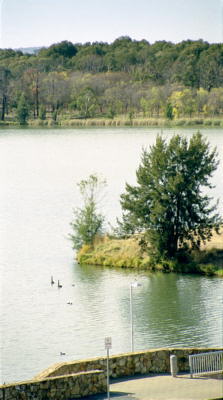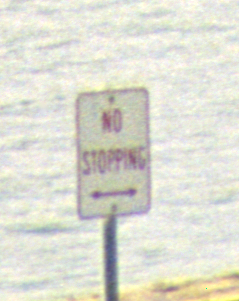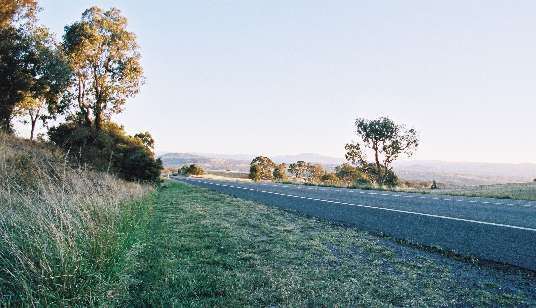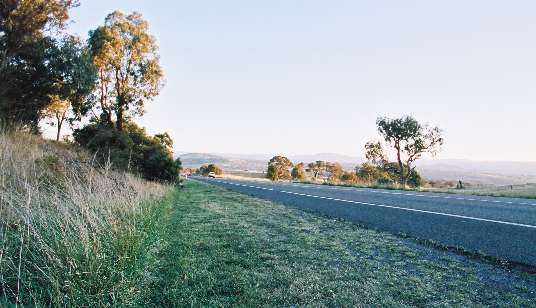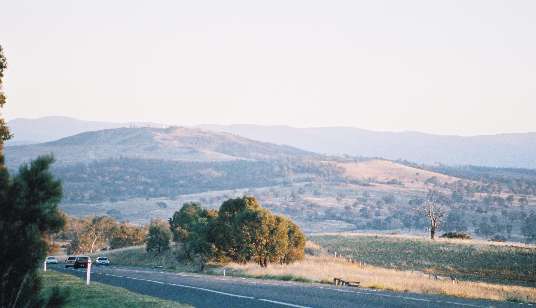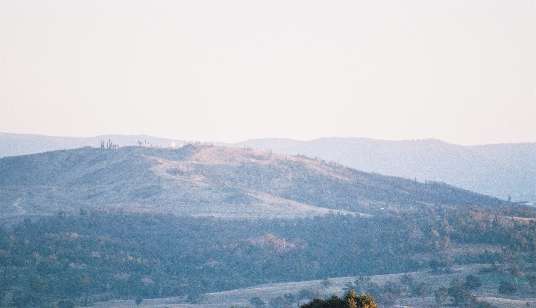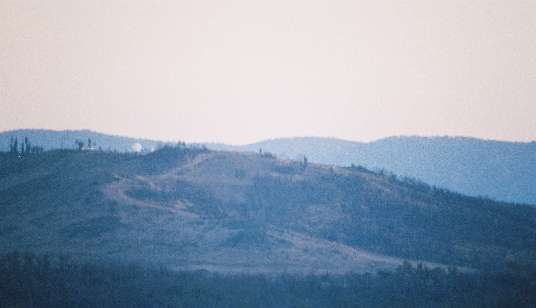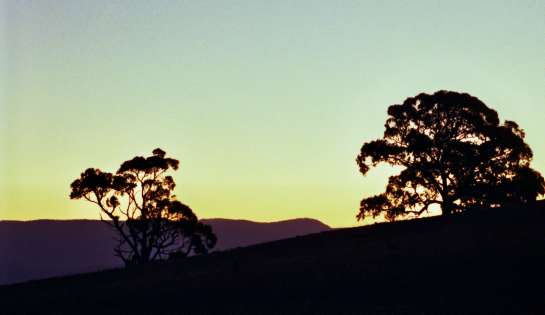A test roll of Kodak Ultra purchased in a bulk lot from the UK via Ebay was an opportunity to also play with a polarising filter. While I didn't actually learn much about the polariser, one of the 7x4 prints I got back from the photofinisher I found stunningly sharp and clean. Both the 2000dpi scan done by the lab and my own 4000dpi scan don't appear equal to the print. The lab in question at that time still had an older enlarger style printer, in addition to the fully digital Frontier printer, and based on a conversation with one of the staff I'm sure that this roll was printed on the older printer.
What particularly struck me was the text on a traffic sign close to a short edge of the frame (near the bottom of the image below); on the print, the text was nearly all quite legible. I haven't been able to measure the distance of this sign from where I was shooting, but estimate it at about 60-70 metres. The traffic sign text is about 75mm high. I was using the 25-150mm lens on the S-1, and this frame was taken at 150mm.
I've had this frame blown up to 14x8 by the original photofinisher, and have also had a 4000dpi scan printed by a different shop, with the "from film" enlargement being visibly sharper (though not drastically so). Both large prints hold up very well for film grain & noise, especially since all I had done to the scan was use PhotoshopLE's despeckle filter once then adjust the colour levels. Neither came out the same as the original 7x4 colour wise, though the scan was a bit closer than the enlargement.
Unfortunately, the scanned and downsized images included here don't do the original print justice.
